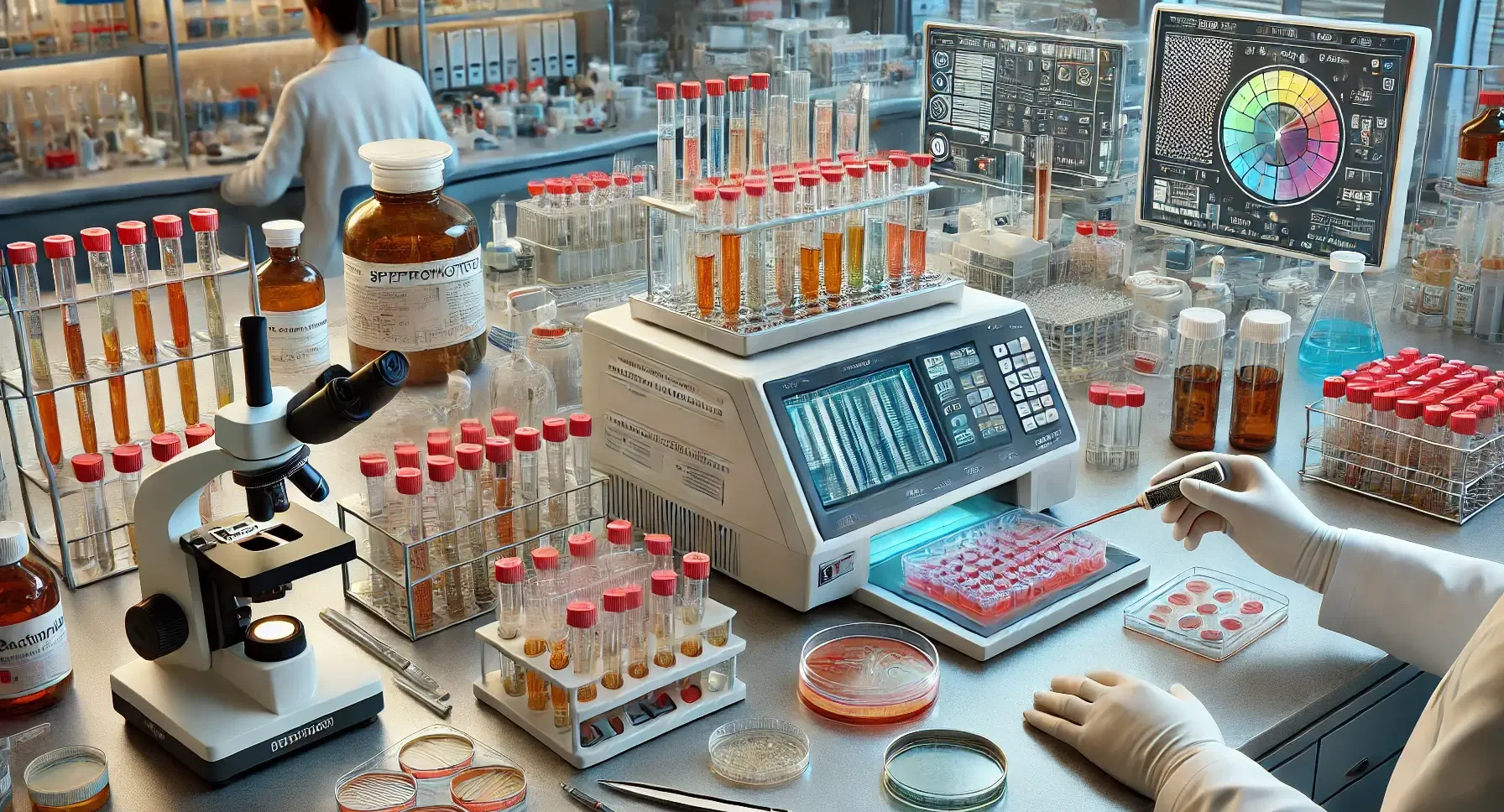Quantitative Measurement of Bacterial Growth involves measuring either the total cell counts or the viable cell count.
Total Cell Count Methods

Counter Chamber Method (Hemocytometer)
- Description: A manual counting method using a specialized slide with a grid.
-
Procedure:
- A known volume of bacterial suspension is placed on the hemocytometer grid.
- The grid is viewed under a microscope.
- Cells within the grid areas are counted.
- The total cell concentration is calculated based on the grid volume and dilution factor.
- Advantages: Simple, inexpensive, provides immediate results.
- Disadvantages: Cannot differentiate between live and dead cells, time-consuming, subject to human error.
Electron Counter Method (Coulter Counter)
- Description: An automated device that counts cells by measuring changes in electrical resistance.
-
Procedure:
- The bacterial suspension is passed through a small aperture.
- As cells pass through the aperture, they disrupt an electrical current, causing changes in resistance.
- Each disruption is counted as a cell.
- Advantages: Rapid, automated, and precise.
- Disadvantages: Expensive equipment, cannot differentiate between live and dead cells, requires maintenance.
Viable Cell Count Methods

Plate Count Method (Colony Forming Units – CFUs)
- Description: A method to count viable bacteria by growing colonies on agar plates.
-
Procedure:
- A known volume of a diluted bacterial suspension is spread on an agar plate.
- The plate is incubated to allow colony formation.
- Colonies are counted, and the number of viable cells is calculated based on the dilution factor.
- Advantages: Only counts viable cells capable of forming colonies, widely used, relatively simple.
- Disadvantages: Time-consuming (requires incubation), may underestimate cell count if cells clump together or are non-culturable under the given conditions.
Membrane Filter Count Method
- Description: A method to count viable bacteria in liquid samples by filtration.
-
Procedure:
- A known volume of liquid sample is filtered through a membrane with a pore size small enough to retain bacteria.
- The membrane is placed on an agar plate or absorbent pad soaked with nutrient medium.
- The plate is incubated to allow colony formation.
- Colonies on the membrane are counted to calculate the viable cell concentration.
- Advantages: Useful for low bacterial concentrations, suitable for large volumes, allows for concentration of bacteria.
- Disadvantages: Time-consuming, requires filtration apparatus, may not capture all viable cells if they pass through the membrane or do not grow on the selected medium.

